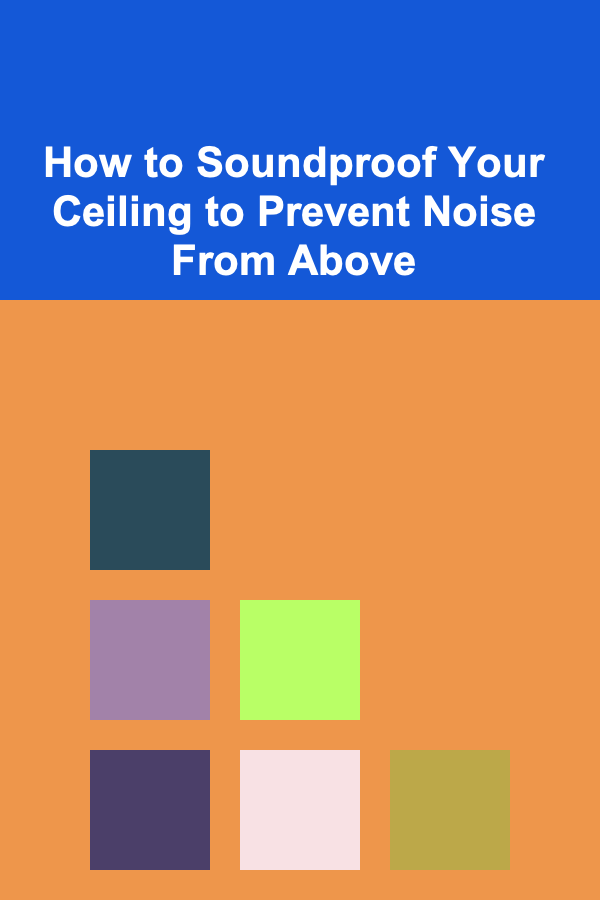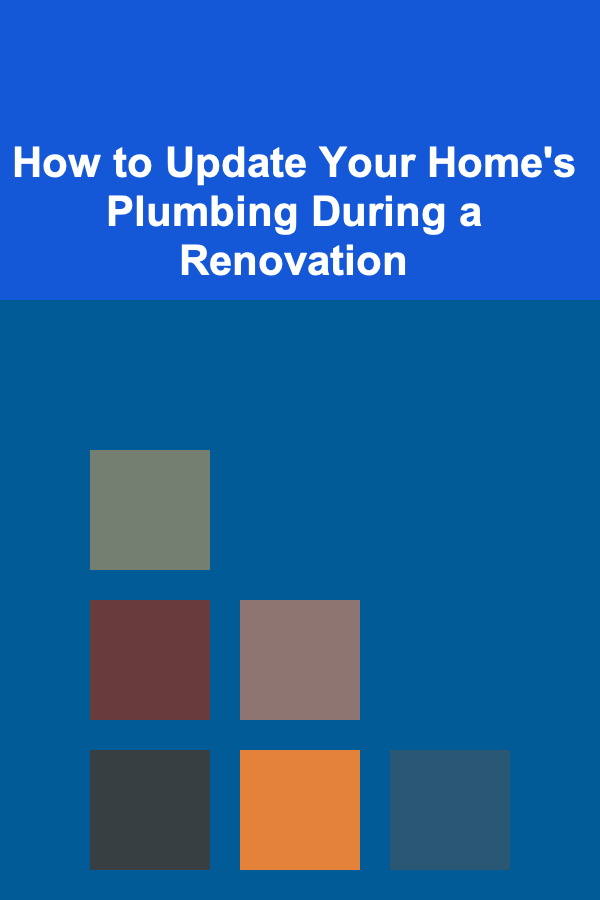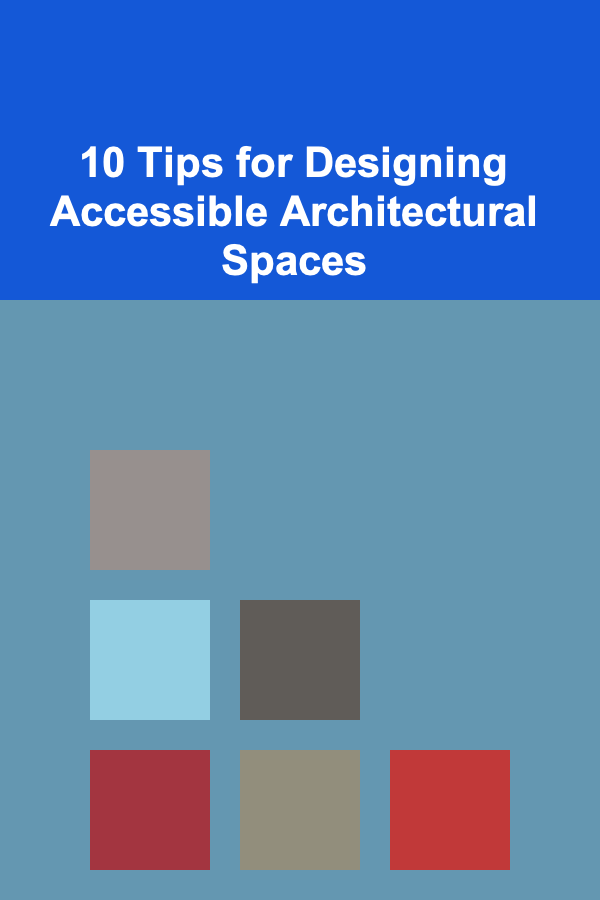
How to Create a Social Media Checklist for Interior Designers
ebook include PDF & Audio bundle (Micro Guide)
$12.99$9.99
Limited Time Offer! Order within the next:

In today's fast-paced digital world, social media is a powerful tool for interior designers to connect with clients, showcase their work, and build a strong brand identity. Whether you're a seasoned professional or just starting your journey in the design industry, leveraging social media effectively can elevate your business and attract potential clients. However, the sheer number of platforms and strategies can be overwhelming. That's why creating a structured social media checklist is essential to streamline your efforts and achieve success.
In this article, we will explore how interior designers can develop an effective social media checklist. By organizing tasks and focusing on strategic objectives, you can maximize the potential of your online presence.
Why Social Media is Crucial for Interior Designers
Social media platforms are more than just a place to interact with friends and family---they're also invaluable business tools. For interior designers, social media offers several key benefits:
- Brand Visibility: Showcasing your work on platforms like Instagram, Pinterest, and Facebook allows you to reach a global audience and build a strong brand presence.
- Client Engagement: Social media enables real-time interaction with potential clients, allowing you to answer questions, give design tips, and discuss project ideas.
- Portfolio Showcasing: A well-curated social media page serves as an online portfolio, displaying your previous projects and allowing prospective clients to assess your design style.
- Networking Opportunities: Social media connects you to other designers, suppliers, and industry professionals, which can lead to collaborations and new business opportunities.
- Inspiration and Trendspotting: Platforms like Instagram and Pinterest allow you to stay up-to-date with the latest trends, which can help inform your design choices and business strategies.
Now that we've established the importance of social media for interior designers, let's explore how to structure an efficient social media checklist to optimize your efforts.
The Social Media Checklist for Interior Designers
Creating a social media checklist helps you stay organized, consistent, and intentional with your online presence. Here's a comprehensive guide to help you get started:
1. Define Your Social Media Goals
Before you dive into posting and engaging with followers, it's important to define what you want to achieve on social media. Your goals will dictate the content you create and the platforms you focus on.
Here are some common goals for interior designers:
- Brand Awareness: Increase recognition and visibility of your design business.
- Lead Generation: Attract potential clients who are interested in hiring you for their design projects.
- Client Engagement: Build relationships with your current clients by sharing updates, testimonials, and behind-the-scenes content.
- Industry Authority: Position yourself as an expert in interior design by sharing valuable insights, tips, and design advice.
2. Identify Your Target Audience
Understanding who your target audience is will help you craft content that resonates with them. As an interior designer, your audience may include homeowners, renters, businesses, real estate agents, and property developers. Consider the following factors:
- Demographics: Age, location, income, and profession of your ideal clients.
- Interests: What are they looking for in terms of design style, trends, and aesthetics?
- Pain Points: What challenges do they face when it comes to designing their spaces? How can you solve those problems?
Having a clear understanding of your audience ensures that your content is aligned with their needs and interests.
3. Choose the Right Platforms
Not all social media platforms are suitable for every business. As an interior designer, you'll want to focus on platforms that allow you to showcase visual content effectively. Some popular platforms for interior designers include:
- Instagram: A highly visual platform perfect for showcasing design projects, before-and-after transformations, and mood boards.
- Pinterest: A great tool for sharing inspiration, ideas, and design trends through pins that link to your website or blog.
- Facebook: A versatile platform where you can create a business page, share updates, and engage with clients through comments and messages.
- LinkedIn: Ideal for connecting with other professionals in the design industry and sharing articles, business updates, and project highlights.
- Houzz: A platform specifically tailored for home improvement and interior design, where you can create a portfolio and receive client reviews.
Choose platforms that align with your business goals and audience preferences. It's better to focus on a few platforms and excel at them than spread yourself too thin across multiple networks.
4. Develop a Content Strategy
Creating a content strategy is key to maintaining a consistent and engaging presence on social media. Here's how you can develop a strategy:
-
Content Pillars: Identify 3-4 key themes or categories of content that align with your business goals. For example, these could include:
- Portfolio: Showcase your design projects with high-quality images or videos.
- Design Tips: Share practical advice and tips that help your followers with their own interior design projects.
- Behind-the-Scenes: Offer a glimpse into your design process, whether it's selecting materials, meeting with clients, or installing furnishings.
- Client Testimonials: Highlight feedback from happy clients, either through quotes, videos, or case studies.
-
Content Calendar: Plan your posts in advance to ensure consistency and avoid last-minute scrambling. Your content calendar should include:
- Posting frequency (e.g., daily, 3 times a week)
- Types of content to be posted (e.g., image, video, story)
- Captions and hashtags
- Key dates (e.g., holidays, special promotions, project launches)
-
Brand Voice: Establish a consistent tone for your posts. Whether you want to be professional, approachable, or creative, ensure that your voice aligns with your brand values and resonates with your target audience.
5. Optimize Your Profiles
Ensure that your social media profiles are fully optimized to represent your brand professionally. Here's what you should focus on:
- Profile Picture: Use a high-quality logo or photo that represents your business.
- Bio: Write a clear and concise bio that explains who you are, what services you offer, and includes any relevant keywords (e.g., "Interior Designer specializing in modern, eco-friendly spaces").
- Contact Information: Make it easy for potential clients to get in touch with you. Include your phone number, email, and website link.
- Portfolio Link: Include a link to your online portfolio or website where people can learn more about your services and see your work in detail.
6. Post Engaging Content Regularly
Consistency is key to maintaining an engaged audience. Here's how you can create content that encourages interaction:
- High-Quality Visuals: Post visually stunning photos or videos of your design projects. Consider investing in professional photography to capture the details of your work.
- Client Stories: Share the stories behind your designs, including client challenges, your design solutions, and the final outcome.
- Engage with Followers: Respond to comments, ask questions in your captions, and encourage followers to share their thoughts and ideas.
- User-Generated Content: Encourage your clients to share photos of your completed designs in their own homes and tag your business.
7. Analyze and Adjust
Track your performance on social media using built-in analytics tools (e.g., Instagram Insights, Facebook Analytics) to understand which content performs best. Key metrics to monitor include:
- Engagement Rate: How often people interact with your posts (likes, shares, comments).
- Reach: The number of people who have seen your posts.
- Follower Growth: The increase in your social media following over time.
- Website Traffic: How many visitors are coming to your website from your social media profiles.
Based on these insights, adjust your content strategy to improve engagement and achieve your goals.
8. Collaborate with Influencers and Partners
As an interior designer, collaborating with influencers, brands, and other professionals in the industry can help increase your reach. Consider partnering with furniture stores, home decor brands, or other design influencers to share content or co-host events.
9. Engage with Industry Trends and Hashtags
Keep up with the latest trends in the interior design industry and incorporate them into your content. Use popular hashtags related to design (#InteriorDesign, #HomeDecor, #DesignInspiration) to increase the discoverability of your posts.
Conclusion
Social media is an invaluable tool for interior designers looking to build their brand, attract clients, and showcase their work. By developing a strategic social media checklist and staying organized, you can ensure that your efforts are focused and impactful. From defining your goals and identifying your target audience to posting high-quality content and tracking your results, a well-thought-out social media plan will help you stand out in a competitive industry and take your interior design business to new heights.
Reading More From Our Other Websites
- [Home Maintenance 101] How to Ensure Your Home's Crawl Space Remains Dry and Free of Pests
- [Home Maintenance 101] How to Maintain Your Home's Sliding Doors for Smooth Operation
- [Polymer Clay Modeling Tip 101] How to Build Polymer Clay Terrain Tiles for Role‑Playing Game Battle Maps
- [Home Staging 101] How to Stage a Small Apartment to Look Larger
- [Personal Care Tips 101] How to Apply Foundation for a Matte Look That Lasts
- [Personal Care Tips 101] How to Use Toner to Combat Acne and Breakouts
- [Home Lighting 101] How to Determine the Perfect Dining Room Chandelier Height
- [Home Storage Solution 101] How to Maximize Every Inch: Storage for Small Kitchens That Actually Works
- [Home Maintenance 101] How to Keep Your Home's Indoor Plants Healthy Year-Round
- [Survival Kit 101] Top 10 Survival Kit Items for Your Vehicle Trunk

How to Clean Your Carpet Without a Carpet Cleaner
Read More
How to Create a Family Garden and Get Everyone Involved
Read More
How to Soundproof Your Ceiling to Prevent Noise From Above
Read More
How to Update Your Home's Plumbing During a Renovation
Read More
Exploring the History of the Universe in Ten Steps
Read More
10 Tips for Designing Accessible Architectural Spaces
Read MoreOther Products

How to Clean Your Carpet Without a Carpet Cleaner
Read More
How to Create a Family Garden and Get Everyone Involved
Read More
How to Soundproof Your Ceiling to Prevent Noise From Above
Read More
How to Update Your Home's Plumbing During a Renovation
Read More
Exploring the History of the Universe in Ten Steps
Read More